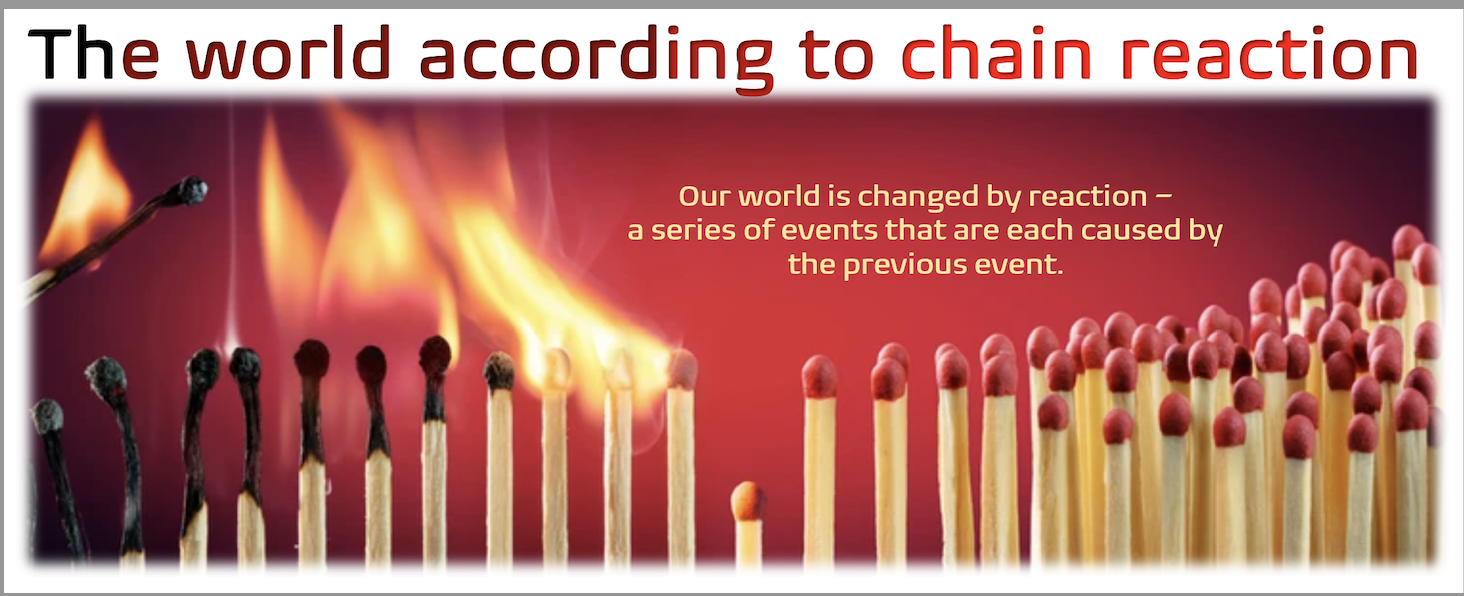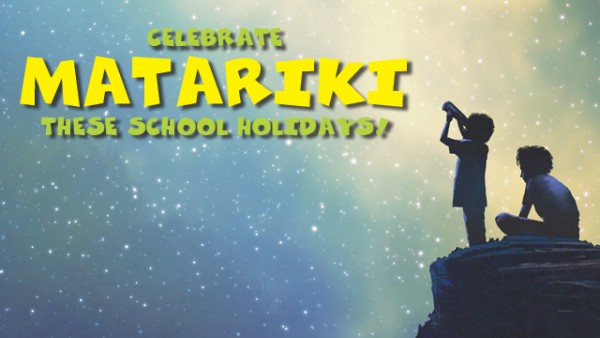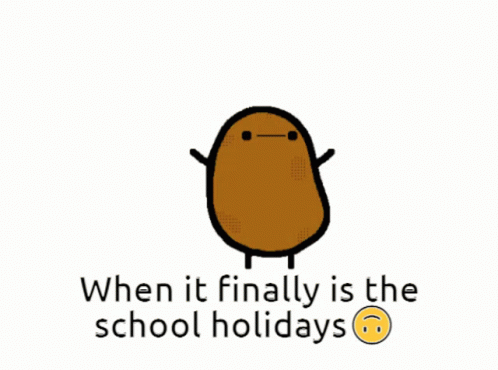10C2 Science
Section outline
-
-
Context: The World According to a Chain Reaction - Our world is changed by chain reactions - A series of events that are each caused by a previous event.
Students have to work out how to fix their pool water.
-
-
Kia Ora Young Scientists,
Welcome to Year 10 Science. My name is Mrs. Lindsay and I will be taking you through your Science journey this year. We will be exploring various areas of Science, including Biology, Chemistry, Physics, and Earth Science. Whilst content knowledge is important in Science, its the Science Skills that permeates through all areas of Science, which will be assess in your Common Assessment Tasks (CATs) delivered under exam conditions this year. In addition to the CATs, you will have an opportunity to start your NCEA Level 1 this year.
Should you need to contact me, face to face is always easiest while in class. Alternatively you can send me an email at alindsay@mhjc.school.nz, but do note that my reply may be brief.
I look forward to co-creating our Science journey together with you all.
Mrs Lindsay

-
Kia Ora Scientist,
Our context this term is Conflict and Challenges. This term, the focus will be challenging yourselves in science by showing initiative so that you succeed in your learning in class, in the lab, and at home.
We will be developing fundamental understanding of the Material World and emphasising lab skills and science literacy so that you feel confident moving into senior school next year!Our first task is to hone in on our Science Skills, and this includes
Lab safety and skills
Using a Bunsen burner safely
Understanding, Investigating and Communicating in Science (Science literacy)We will be focusing on increasing our chemistry knowledge by doing plenty of practicals so that we are confident practitioners in a laboratory setting.
Success Criteria:
- Conduct myself in a lab safely
- Identify and use lab a variety of lab equipment correctly
- Use a Bunsen burner effectively and safely
- Show accuracy when measuring substance
- I can draw a graph accurately, using scientific conventions
- Understand the 3 states of matter
- Understand the basic structure of an atom
- Communicate the structure of an atom
Activities:
- Charades
- Lab equipment- identify and draw
- LAB- Practise lighting and extinguishing a bunsen burner
- Measuring and reading scales accurately
- States of matter worksheet
- DEMO - Sublimation of iodine crystals
- State of matter - Brainpop
- Drawing graphs - practise
Further Learning:
All resource will be posted on MHO, Google Classrooms. We will also be utilising Education Perfect and Brainpop to supplement understanding.
EXPLORE / TŪHURA learning intentions:
- We are EXPLORING how we can change the state of matter
- We are EXPLORING particle theory and how this is represented on the periodic table
- We are EXPLORING the physical and chemical properties of metals vs. non metals
- We are EXPLORING how new compounds can be formed through chemical change
-
Kia Ora scientists
Success Criteria:
- Interpret aspects on the periodic table
- Differentiate the different charges of sub atomic particle
- Calculate sub atomic particles using numbers on the periodic table
- Determine the electron configuration
- Define "element"
- Recall the basic elements on the periodic table and its symbols (up to 20, and other commonly used symbols)
- Understand how the periodic table is structured
- Understand how the periodic table is classified
- Identify the different types of elements in a periodic table
Activities:
- Memorise the 1st 20 elements- Mnemonic
- Periodic table vs people in our communities
- Dogs teaching chemistry
- How to read elements on the periodic table - fill in the blanks
- Drawing atomic models and electron configuration
- Brainpop -Periodic table of elements (quiz, challenge, worksheet, game-Sortify)
- "Introduction to Chemistry" video
Take notes and definitions - Brainpop- "Compounds and Mixtures" (video and quiz)
- EP- "Pure and Impure Substances"
- SCIPAD 18-19 "Mixtures and compounds"
Further Learning:
All resource will be posted on MHO, Google Classrooms.
-
Kia ora scientists,
Success Criteria:
- I can describe a chemical reaction via a chemical equation
- I can describe ions and explain their charges
- I can count the number of atoms in ions and polyatomic ions using chemical symbols and formulae
- I can balance ions and polyatomic ions using the table of ions, and write their chemical formulae
- I can identify ionic and covalent bonds using chemical formulae
- I can write a chemical formulae and demonstrate the chemical reactions visually
Activities:
- SCIPAD- writing chemical equations
- Ion presentation
- How to use table of ions
- Drawing cations and anions, calculating charges
- Counting the number to atoms in a molecule
- Molymods
- Ions workbook - balancing charges of ionic and polyatomic molecules
Further Learning:
See Google Classrooms
-
Our context for Term 2 is:

This is especially true in Chemistry - chemical bonds are the result of chemical reactions, which we benefit from in everyday life.
-
Kia ora Scientists
Success Criteria:
Metallurgy- I can describe different properties of metal
I can define an alloy and give examples of alloys
I can write chemical word equations
I can explain what happens when metals react with acid
I can explain what happens when metals react with oxygen
I can explain what happens when metal carbonates react with acids
I can balance simple chemical equationsActivities:
- Whoosh bottle- to explain particle motion theory
- investigate different physical properties of metals
- sodium and water demonstration
- writing chemical word equations
- MASH LAB
- MOMO LAB
- CASHC LAB
- Balancing simple chemical equations - videos
- Balancing simple chemical equations - worksheet
Further Learning
See Google Classrooms, BBC bitesize, EP and Brainpop - Whoosh bottle- to explain particle motion theory
-
Kia ora Year 10s
Success Criteria:
I can explain the pH scales in terms of acids and bases
I can balance chemical equations
I can neutralise acids and bases, and explain the neutralisation reactions in terms of hydrogen ions and hydroxide ions
Demonstrate the chemical reactions Base + Acid --> Salt + H2O in a laboratory practicalActivities:
- Chemical compound match
- Video - how to balance chemical equations
- Video - balancing chemical equations practise questions
- Balancing chemical equations - bronze, silver worksheets
- Competition - Balancing chemical equations challenge
- Draw a pH scales with examples of common chemicals
-
Challenge- Make a pH rainbow, in a test tube using acid, base, universal indicator, a pipette
- Scipad 28 - 29
- Practical - Bases + Acid --> Salt + H2O
- Scipad 36 - 37 Writing chemical equations
- Practical - neutralise and make salts Scipad 38
- Brainpop - Neutralisation
- Scipad 46 - 47 End of unit review
Further Learning:
See Google Classrooms
-
Kia ora scientists,
This term we will be EXPLORING the physical world around us, and explaining everyday physical phenomena through developing our understanding of forces and motion. Next term, you will be designing and conducting a physical investigation as part of your NCEA Science assessment experience.

-
Kia ora Year 10s
Success Criteria:
Define the difference between weight, mass and gravity
Able to measure forces using a force metre
Identify different types of forces and categorise them in contact vs. non contact forces
Identify balances and unbalances forces
Calculate the net resultant force on an objectActivities:
- Watch videos and compare weight, mass, and gravity
- LAB - Weight vs mass + write up
- LAB - Newton metre lab + write up
- Types of forces - Identifying and drawing free body diagrams
- https://www.ck12.org/physics/free-body-diagrams/enrichment/Types-of-Forces-and-Free-body-Diagrams-Overview/?referrer=concept_details
- Brainpop- Forces
- Scipad 102-103
Further Learning:
All resources on Google Classroom
-
Kia ora scientists,
Success Criteria:
I can do length conversions
I can calculate distance, time, and speed using a formula triangle
I can represent motion by drawing a distance time graph
I can use a distance time graph to calculate speed by finding the gradient
I can describe a journey using a distance time graphActivities:
- Length conversion teaching/revision
- LAB - Investigation - Do taller people run faster + write up
- SCIPAD 100-104
- Distance time graphs - notes + mix and match activity
- Drawing distance time graphs practise - worksheet
- Distance time graph interpretation - worksheet
Further Learning:
All resources on Google Classroom
-
Kia ora akonga
Success Criteria:
I can calculate distance, displacement, speed, velocity, time and acceleration
I can explain acceleration, and recall the formula used to find it
I can describe the relationship between distance, displacement, speed, velocity, and time, and acceleration
I can calculate speed, time, and acceleration using a formula triangle
I can do physics questions and show formula, working, answer and unitsActivities:
- Acceleration worksheet 000
- Acceleration Problems Worksheet
- LAB - Marble Runs + write up + graph
- Video - Brian Cox - Feather and ball
Further Learning:
All learning resources on Google Classroom
-
Kia ora students
Success Criteria:
I can describe Newton's 3 Laws of Motion, giving examples of each
I can apply Newton's 3 Laws of Motion in a given situationActivities:
- Resultant forces - quiz
- LAB - Inertia - video on table cloth trick + questions
- LAB - Inertia - pennies on a cup + questions
- LAB - Newton's 3rd Law - equal and opposite action reactions - tug of war with force metres + questions
- LAB - Newton's 3rd Law - equal and opposite action reactions - tug of war on dolly carts + questions
- Galileo's Measure of Gravity video
- Shedding light on motion video + worksheet
- HW - Speed, velocity, acceleration problems worksheet
Further Learning:
All resources on Google Classroom
-
Kia ora akonga,
Success Criteria:
Apply Newton's 3 Laws of motion to real life car crashes
I can describe different types of energy and how they transform
I can recall and apply the Law of Energy Conservation
Gain a basic understanding of what an NCEA physics investigation requires in the written lab reportActivities:
- EP - Newton's 3 laws
- "Understanding Car Crashes - It's basic physics" + concept organiser worksheet + discussion worksheet
- Forms of energy - Mix and Match
- Energy transformation - mix and match
- Forms of energy, energy transformation - videos + worksheet/ discussion questions
- EP - introduction of NCEA physics investigation, sources of error, methods, and experimental technique
Further Learning:
All resources on Google Classroom
-
Kia ora Year 10s,
We will be focussing on preparing ourselves for NCEA 90935 Physics Investigation.
Success Criteria:
I can create a graph on spreadsheet that is suitable to the data, and fulfils NCEA requirements
I can write up a method, conclusion, and discussion using NCEA structure and language.
I have attempted to design and conduct physics investigation using the NCEA framework.
I have attempted to communicate my physics investigation using keywords and NCEA style sentence structures.Activities:
- NCEA taster - Paper helicopter wingspan investigation
- Design, practical, write up using NCEA paper
- NCEA conclusion and discussion- planning and writing template - exemplar provided
- Helicopter Investigation 2.0 - extra practise
Further Learning:
All resources on posted on GC and EP
-
Kia ora students
Success Criteria:
I can create a graph on spreadsheet that is suitable to the data, and fulfils NCEA requirements
I can write up a method, conclusion, and discussion using NCEA structure and language.
I have designed and conducted physics investigation using the NCEA framework.
I have communicated my physics investigation using keywords and NCEA style sentence structures.I have complete NCEA 90935 Physics Investigation under NCEA assessment conditions
Activities:
- Hooke's Law powerpoint and video
- NCEA mock - Hooke's Law investigation
- Design, practical, write up using NCEA paper, within NCEA timeframes
- NCEA conclusion and discussion- planning and writing template - exemplar provided
- Hooke's Law 2.0 - extra practise
Further Learning:
All resources on posted on GC and EP
-
Kia ora Year 10s
Success Criteria:
I can recall and describe cell organelles and their functions within the cell
I can differentiate between animals and plant cell organellesActivities:
- Cell song
- Cell song Karaoke competition
- Amoeba sisters - Introduction to cells video
- Cell Organelle worksheet
- Brainpop - Intro to Genetics
Further Learning:
All resources are posted on Google Classroom and EP
-
Kia ora Year 10s
Success Criteria:
I am beginning to use scientific knowledge to evaluate cultural folklore used the explain the origins of disease, and empathise with those affected.
I can identify different types of variations and explain why variation is important
I can describe the difference between DNA, genes, chromosomes, and traits
I can describe the building blocks of DNA in detail
I can make a model that is representative of the DNA structureActivities:
- Introduction to variation ppt
- Identifying different genetic trait on me and a friend
- Consequences of inbreeding - exploring genetic illness such as haemophilia in the royal lineage
- Video - The consequence of marrying your cousin
- Amoeba sisters video - Introduction to heredity
- Worksheet - DNA, chromosomes, genes, and traits
- EP - revision on DNA the molecule, genetics, and the evolution of NZ species
- DNA powerpoint
- SCIPAD 134-135
- DNA Molymod demonstration
- Build your own DNA
Further Learning:
All resources are posted on Google Classroom and EP
- Introduction to variation ppt
-
Kia ora akonga,
Success Criteria:
I can use lab skills to extract DNA from fruit, and identify the DNA using a microscope
I can explain how chromosomes determine sex
I can explain how alleles determine the 3 types of genotypes
I can describe the difference between genotype and phenotype, and explain how genotypes determine phenotypes
I can use Punnett Squares to predict genotype and phenotype ratios/probabilities of offspringActivities:
- LAB - DNA extraction from kiwifruit and identifying DNA under a microscope
- Make a DNA paper model (Scipad 136-137)
- Punnett square activity on mini whiteboards
- Punnett squares SCIPAD 140-145
- Watch “Monohybrid and the Punnett Square Guinea Pigs"
- Brainpop - "Heredity" movie, quiz, challenge , vocabulary, worksheet
- Genetics - punnett squares tasksheet on GC
Further Learning:
All resources are posted on Google Classrooms -
Kia ora students
Success Criteria:
I have prepared for my science CAT in Week 5
I have sat my Science CAT in week 6
Activities:
- SCIENCE CAT - Tuesday 14th November, Session 3+4
- Graphing revision
- Scientific investigation revision - fair testing
- 2022 Science CAT
- 2021 Science CAT
Further Learning:
All resources are posted on Google Classroom -
Kia ora Year 10s
Success Criteria:
I am beginning to use scientific knowledge to evaluate cultural folklore used the explain the origins of disease, and empathise with those affected.
Activities:
- Stan Walker - "My true story of my family and I" documentary
- Interactive story - "Stan Walker, To Hell and Back" and the ODT articles
Further Learning:
All resources are posted on Google Classroom and EP - Stan Walker - "My true story of my family and I" documentary
-
WORK EXPERIENCE WEEK!!
Have fun!
-
Kia ora akonga,
Wednesday 6th Dec - Santa Show!
Thursday 7th Dec - Whanau Assembly
Friday 8th Dec - WHANAU DAY OUT!
Monday 12th Dec - Prizegiving
-
You made it!!



